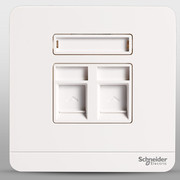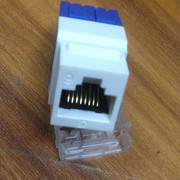Hi, currently I'm using the schneider avatorOn series of ethernet socket on the wall.

which comes with one of these:

which the product claims to be a cat 6 grade connector?
I can find one that says cat 5/5e too, but not anything higher than 6.
I wonder if this single connector will hinder all the cat 8 cables pointless if I go through the wall with the above connector?
If so, would cat 6a be the same?
Thank you all in advance.

which comes with one of these:

which the product claims to be a cat 6 grade connector?
I can find one that says cat 5/5e too, but not anything higher than 6.
I wonder if this single connector will hinder all the cat 8 cables pointless if I go through the wall with the above connector?
If so, would cat 6a be the same?
Thank you all in advance.

